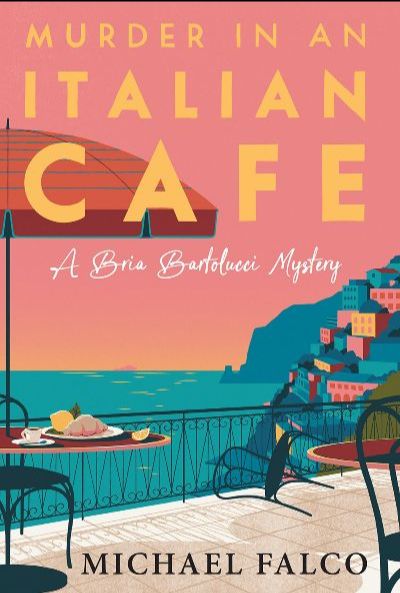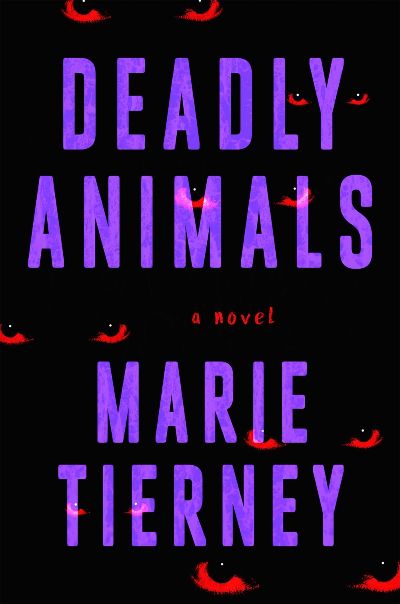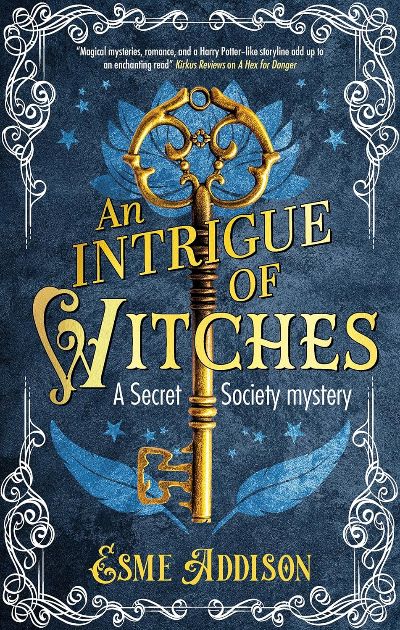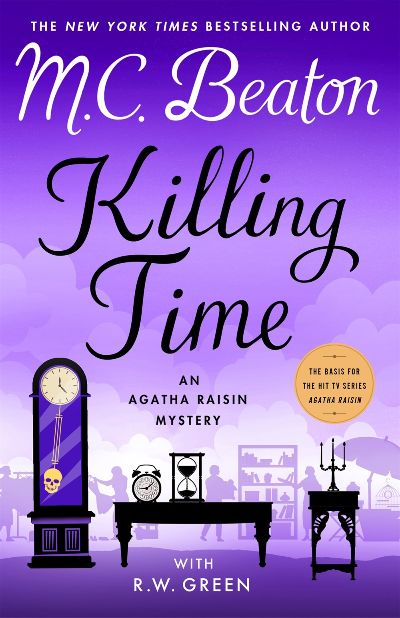Marr’s thrillers have a knack for getting inside the minds and lives of modern women, and this one continues that run, here in the high-flying (and sometimes just high) world of celebrity PR. Addison Stern is a bitchy, ruthless PR star to the stars. She’ll do anything for her clients, including ruining junior media employees who might be naive enough to try to look beneath the surface of the stars’ fake tans and Botox. She’s vying for a partnership at her firm, and finding her pharma-bro client, Phinneas Redwood, dead is not what she needs, especially when that murder is followed by other crimes that all lead investigators to Addison. She never thought she’d see the day, but she partners with her private-detective ex, Connor Windell—he’s only too happy to leave a losing streak in Las Vegas—to get to the bottom of things and save herself. The two are off on a jet-setting investigation that takes them to Monaco and other more-money-than-sense places in search of the truth. The touch of Jackie Collins here–the ridiculous riches if not the steaminess—adds a deliciously over-the-top touch to a fast-moving, satisfying whodunit.
Mystery & Detective
A wonderfully rich narrative that ricochets between the past and the present, reminding us just how complex life can be. Madeline Brimley left rural Georgia years ago, eventually settling in Atlanta to pursue a career in the theater, a career that’s now floundering. Then she learns that her beloved Aunt Rose—who has been a role model for Madeline throughout her life—has died, leaving her an eccentric bookstore housed in a grand old Victorian mansion in Enigma, GA. But there’s a catch. According to Rose’s will, Madeline needs to live in Enigma for a year before the store belongs to her. Is this the life Madeline wants? Add to this several acts of violence directed against her—menacing phone calls, a threatening fire, and a startling murder—and Madeline, and the reader, are questioning the many secrets that are all too alive in this tiny town. Fortunately, Madeline is befriended by several women—the Episcopalian reverend in particular—who bring plenty of joy and laughter to the story. And while this novel would seem to use many of the classic cozy tropes, it is wonderfully unique in its own right. Looking forward to more of Madeline.
Before heading to her evening shift as an investigator for Phoenix Seven, an Italian liaison unit that works with the U.S. military in Naples, Nikki Serafino is relaxing on the sailboat she co-owns with her friend, undercover cop Valerio Alfieri, when they rescue a woman who has been abandoned in the bay by her abusive boyfriend. As they head back to port, the Calypso’s keel strikes a decomposing body; Nikki notes the ligature marks on the man’s neck. The next day, while assisting a U.S. serviceman and his family in the wake of a traffic accident, she discovers another murder victim, this time one who’s been shot to death. After the bodies are identified as American naval officers, Nikki must conduct a tricky balancing act of partnering with both NCIS Special Agent Durant Cole and the Italian police in the investigation of possible links between the killings. Could the Camorra Mafia be involved? At the same time, Nikki’s intense family drama, involving the recent loss of her American mother, a loser brother in deep debt to local gangsters, and a tumultuous relationship with her controlling boyfriend, Enzo, threaten to derail her probe. Heider, who lived in Naples for several years and deployed as a civilian analyst aboard U.S. and European naval ships, makes an impressive debut with this engrossing thriller that captures both the baroque beauty and gritty danger of Italy’s third-largest city. It also introduces a tattooed, kick-ass female protagonist (“Nikki was short and compact and muscular with a dynamic, interesting face”) who may remind some readers of Stieg Larsson’s Lisbeth Salander but without that character’s severe asocial tendencies. If there is a minor flaw, it’s that the Heider’s vividly drawn Italian characters far outshine her dull American counterparts. An enjoyable summer read.
Hang on to your hats, this is quite the ride. Three writers—Kat De Noir (writer of erotica), Cassie Pringle (a Southern mom and writer of multiple cozies), and Emma Endicott (uptight New England author of historical fiction)—meet up at Bouchercon, the leading crime writers’ conference. The three women have lots in common: same editor and same obsession with the leading literary hot shot, Brett Saffron Presley (BSP). BSP is currently living on a remote island off the Hebrides, basically as a recluse, and the three women head off to the island to work on their joint novel. Or is that really their intent? Turns out that they each know BSP, and loathe him equally—for pretty much the same reasons—and BSP-stalking takes precedence over any writing. Castle Kinloch, an over-the-top Gothic castle full of hidden passages, provides the background, while the sordid history of a 19th-century laird lends a contemporary creepiness. Enjoy plenty of humor among the women and the native Scots, lots of insider jokes about the publishing industry, and a great big helping of Scottish Romance. Williams, Willig, and White have delivered one fabulous ride that’s sure to leave readers hungry for more.
Michael Falco’s novels are a bit like War and Peace, if Tolstoy wrote cozies set on the Amalfi coast. They are big and sprawling, as rich with characters—most family, many returnees—as they are rich in plot. But at the center of the book stands Bria Bartolucci, the young widow and mother who moved to Positano to open a B&B, now a great success. But bad things still happen, and when a famous chef is murdered—poisoned!—while filming a cooking show, it’s Bria who is right next to him. From there we are off and running as Bria attempts to solve who murdered the chef—an endeavor that is wrapped up in a series of smaller mysteries, likely suspects, and red herrings—without getting killed herself. Come for the mystery, but stay for the wonderful humor and the familial love. Some diversity—doesn’t every family have at least one queer cousin?—would go far in making the series more credible.
Fourteen-year-old Ava Bonney has a curiosity about dead things. She keeps a secret roadkill body farm in an abandoned garden near the local motorway and likes to sneak out of her flat in the dead of night to note the decomposition rates of her finds. But on this particular evening in May 1981, she discovers the putrefying body of her classmate Mickey Grant, who disappeared from a local disco two weeks ago. “Ava knew him as an unpleasant boy, a bully you couldn’t walk past without him saying something spiteful. When he went missing, Ava hadn’t cared.” But she telephones the police and, not wanting to reveal her unusual hobby, disguises her voice as Mrs. Poshy-Snob, a woman with a low voice and flawless diction. When he interviews Ava during his inquiries, Detective Sergeant Seth Delahaye is impressed by the teen’s intelligence and self-possession. Signs point to a monstrous serial killer at work after Ava and her best friend John find another mutilated corpse, that of a six-year-old boy. In alternating chapters, Tierney’s compelling narrative follows Ava’s and Delahaye’s separate investigations until the two threads braid into a chilling climax. Ava’s precocity may remind readers of Alan Bradley’s 11-year-old amateur sleuth, Flavia de Luce, but Ava uses her morbid studies to escape an unhappy home life, and her territory is not a cozy English village but the gritty, impoverished suburb of Rudery, South Birmingham. Selected as a finalist in the Daily Mail First Novel competition, this astonishing, beautifully written debut is creepy, gruesome, and heartbreaking. One of the best thrillers of the year.
Cordelia Black’s successful, not-always-above-board career in pharmaceutical sales enables some of her passions in life: buying super-expensive designer clothes and drugging bad men so that she can get them to her secret killing room. That terrifying shadow world is never meant to be revealed to those Cordelia loves most: her best friend, Diane, and Diane’s daughter, snarky but loveable pre-teen Samantha (don’t call her Sammy). But Cordelia and Diane’s funny/tragic dating lives mean that her worlds collide, after which everything–everything–goes wrong in a Murphy’s Law-meets-murder nailbiter. It’s all too believable, making this gripping debut one that you’ll tear through. If you’re thinking of Dexter, you’re right–it does have parallels to that great show, though it has a much better ending and more side characters to root for. Another plus: it’s set in Baton Rouge, less often a setting than big sister NOLA. Get this on your TBR pile!
What’s better than a gripping story that also teaches you a ton about a fascinating subject? That’s just what readers will get in Goldberg’s follow-up to Malibu Burning (2023). This time, odd-couple Los Angeles arson investigators Walter Sharpe and Andrew Walker are faced with several perplexing crimes. The central case involves a series of just-built, as-yet-uninhabited homes for the wealthy that combust in a far more explosive way than an empty house. Then there’s the man who’s found dead in a fire, but the fire didn’t kill him. Fraud pokes its head up too, with all keeping Sharpe—a genius with fire investigation, but socially not so much—and his still-learning partner busy with intriguing theories based on detailed descriptions of the workings of fire, accelerants, and more. The characterization here is wonderfully enjoyable, with the partners and their various associates bantering in ways that’s sometimes hilarious and always reveals the human behind the shield. Goldberg’s author’s note helpfully details the books about fire dynamics and investigation that he used for research, and readers may want to try these as well, notably Fireraisers, Freaks, and Fiends, “Torchered” Minds by former LA County arson and explosives detective Ed Nordskog, who also answered questions for the book.
Addison, author of the Enchanted Bay series, brings her lively voice to a series debut featuring a heroine to remember. Historian Sidney Taylor, a young Black woman, is on furlough from the Smithsonian when she gets a mysterious offer to go on a quest in her hometown, Robbinsville, VA, the heart of which is the Josiah Willoughby museum. Sidney’s parents are rich—her father is the Speaker of the House of Representatives—but they believe in the young woman making her own way, so when she receives a wax-sealed envelope with an invitation inside to find something historically significant in Robbinsville, and the prize is a million dollars, she’s in. There’s danger and intrigue in store though, with Sidney receiving threatening messages and increasing pressure on the museum to give in to virtual reality as the future, a government program that seems more sinister by the minute, headed as it is by a woman who will remind readers of scary real-life tech-exec Elizabeth Holmes. The small-town scene, loving family members, and history-tinged puzzles keep the pages turning fast; there are plenty of real historical details packed in, too, surrounding a long-running conspiracy about the U.S. presidents. A winning series starter.
Silly me. I’ve long held a bias against novels written from the grave (sorry V. C. Andrews!), where the author has died and someone else has taken up the series. Can these books really be any good? Well I’m happy to report that the forthcoming Agatha Raisin novel, Killing Time, written “with R. W. Green,” is a whole load of fun. Beaton was astoundingly prolific, writing multiple series under a handful of names. She died in 2019, the same year she published the 30th Agatha Raisin book (the series, now written by R. W. Green, is up to 35). With several plots in action—Agatha’s detective agency is pursuing shop burglars, an antiques dealer/neighbor is murdered, Agatha creates a promotional day to launch a new wine, a love affair takes her to Mallorca—fans get to meet again all their favorite characters from Raisin-world in action, from Mrs. Bloxby, the vicar’s wife, to several of Agatha’s paramours. But at the heart is Agatha herself, as curmudgeonly and cantankerous, tough and tender as ever. Agatha, it’s great to have you back.










